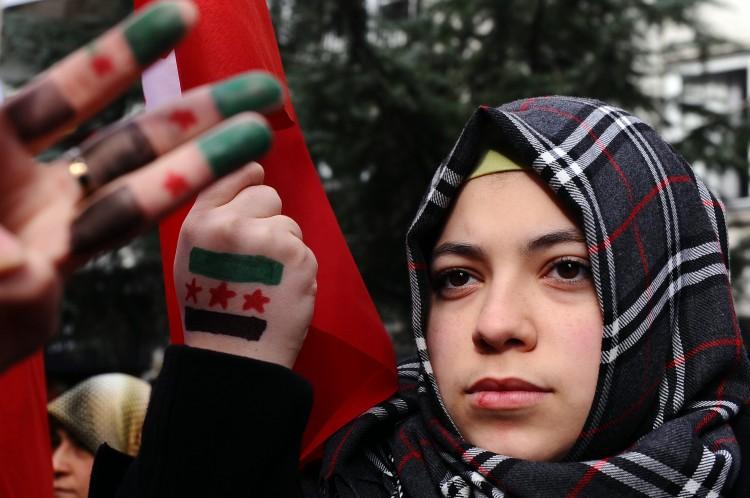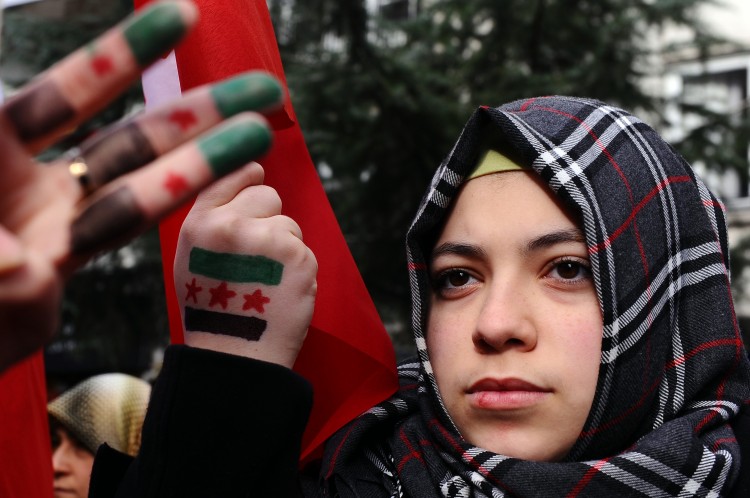Two men, creating a human chain, tried to pull a man’s limp body from the street. But they only dared to reach out a little, fearing they might be hit by snipers positioned on the roof of a nearby state security building, just like the man they were hoping to save.
The cellphone video, which shows the men’s desperate struggle in Zabadany, a suburb of Damascus, was released by the Local Coordination Committees of Syria on Wednesday. According to the group a total of 32 people were killed in Syria on Wednesday alone, including three women and a child.
The continued onslaught against protesters in Syria has resulted in 5,000 deaths according to recent United Nations estimates. Pressure to end the violence is increasing with U.N. Secretary-General Ban Ki-moon making an appeal Wednesday for outside action. “In the name of humanity, it is time for the international community to act.”
One element of Syria’s divided opposition, the Syrian National Council, opened up an office in Istanbul. Samir Nashar, a member of the group’s executive wing, told the television station that the “regime has to go, that there should be no dialogue with the regime, and protesters should be protected.”
While U.S. State Department spokeswoman Victoria Nuland warned against “further militarizing the situation in Syria,” France and Turkey—a former close ally to Syria—have floated the idea of creating a humanitarian corridor in Syria that would inevitably require military action, considering how unlikely it is that Syria would allow aid agencies in.
The corridor would provide food and medical supplies to beleaguered civilians in Syria, such as in the flashpoints cities of Homs, Hama, and Daraa. Creating a humanitarian corridor or a buffer zone in the form of an enclave as proposed by Turkey, would however require significant military resources, such as thousands of ground troops and air support, according to a paper by the Washington Institute for Near East Policy (WINEP), published Wednesday.
According to WINEP, a similar enclave in Iraq, created by the United States and coalition troops in 1991 to protect Iraqi Kurds in Northern Iraq, required 20,000 ground troops and 50 international and nongovernmental organizations to provide aid.
Creating a corridor or enclave would require military operations to suppress Syria’s air defenses and the Syrian air force, according to a report published by the Center for Strategic and International Studies (CSIS) on Tuesday. Syria holds 4,707 surface-to-air missiles (SAM) compared to 216 in Libya under Gadhafi’s rule according to the report.
Syria’s air defenses are aged, however, with many dating back to the Cold War, making them particularly vulnerable to precision air strikes. Syria also has no major long range SAM systems along the border with Turkey to the north, since traditionally its military focus has been on Israel.
In spite of this, the CSIS analysis argues that a military operation in Syria would require a far more advanced operation than in Libya. “Syria’s leverage over Hezbollah, and Syrian long-range missiles, air and coastal defense systems, and chemical and biological stockpiles present another kind of challenge,” says the report.
CSIS air strikes, similar to those used by NATO forces in Libya, would likely see the same number of casualties as killed by Syrian President Bashar al-Assad so far, as military locations are close to urban centers. Syria has a population three times larger than Libya, with a density almost 30 times higher.
While in Libya opposition forces controlled territory; this is not the case with the defected Syrian troops, operating under the name of the Free Syrian Army. Also, most of the Syrian security forces have remained loyal to al-Assad in the nine months of uprising in Syria. Opposition forces in Syria have shown little unity.
With Syria’s strong sectarian divisions along Sunni-Alawite lines, Alawite units as well as Sunnis loyal to al-Assad are likely to perceive no alternative than to defend the president’s rule, given their limited prospects if he is toppled, according to CSIS.
The Sunni-Alawite tensions are something that would be “difficult to bring under control by any of the country’s political forces”—presenting the risk of an escalation along sectarian lines, resulting in a divided Syria.
An escalation in Syria would also potentially see a spillover in the region, such as to Lebanon, Jordan, Iraq, Turkey, and Israel.
Al-Assad had already warned Turkey that it would respond to any foreign intervention against it with attacks on U.S., Israeli and European interests, according to WINEP citing Iran’s Fars News Agency.
Syria continues to enjoy a great amount of support from Iran, which has been its most important strategic partner for 30 years, and by Hezbollah in Lebanon, and has international backing from Russia and China.





